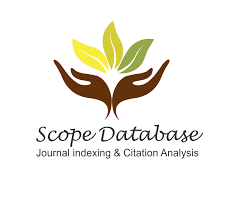Details
Using of Linguistic Aspects of Bloom’s Taxonomy in Blended Learning
Ayad Anad Abdullah
University of Baghdad, Iraq
Prof. Dr. Bushra Sadoon Mohammed Al Noori
University of Baghdad, Iraq
Download PDF http://doi.org/10.37648/ijrst.v11i01.003
http://doi.org/10.37648/ijrst.v11i01.003
Abstract
This paper shows findings from the practical implementation of Bloom’s taxonomy into the class of Intercultural Business Communication that has been learnt for several years at the Faculty of Informatics and Management, University of Hradec Kralove, Czech Republic. The class uses blended learning, and recently, Bloom’s taxonomy has been identified into the online course. Research I examined the students’ satisfaction with the class before explaining Bloom’s taxonomy, and Research tests the students’ satisfaction with the new approach utilizing the Bloom’s taxonomy. The findings are as follows: the student knows the difference after the implementation of Bloom’s taxonomy into the online course; moreover, the students also measure the new course in a much more positive way than the previous one. Bloom’s taxonomy, therefore, showed enormously useful in this blended learning environment, and the present paper highlights the importance of such an implementation. As a consequence, blended learning courses using Bloom’s taxonomy will be more systematic and therefore more efficient. The results of this research showed that proper linguistic utilization of Bloom’s taxonomy terminology proved to be useful, and the paper stressed importance of systematic approaches in blended learning courses so that they are creative and attractive for the new generation of online course users. Considering the small number of participants, further studies were needed to explain the results of this research. replique montre imitatie horloges
Keywords: blended learning; intercultural communication courses; eLearning; linguistic aspects of blended learning; hybrid learning; communication
References
- Bazelais, P.; Dleck, T. Blended learning, traditional learning: A comparative study of college mechanics courses. Educ. Inf. Tech. 2018, 23, 2889–2900. [CrossRef]
- Pikhart, M. Implementing new global business trends to intercultural business communication. Procedia c. Behav. Sci. 2013, 142, 954–957. [CrossRef]
- Pikhart, M. New Horizons of intercultural communication: Applied linguistics approach. Proceedings of the ERPA International Congress on Education, Amsterdam, etherlands; 2014; pp. 954–957.
- El-Hmoudova, D. The value of intelligent multimedia application in applied linguistics instruction. Adv. Sci. Lett. 2018, 24, 2546–2549. [CrossRef]
- Klimova, B. Smart teacher. Smart education and E-learning 2017. In Proceedings of the SEEL 2017, Algarve, Portugal, 21–23 June 2018; pp. 321–328.











